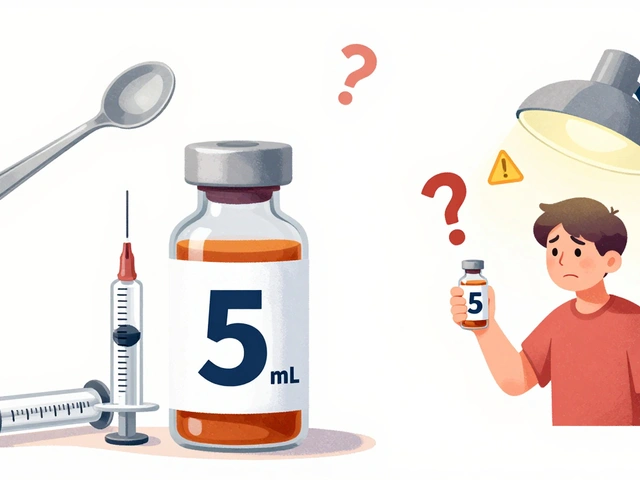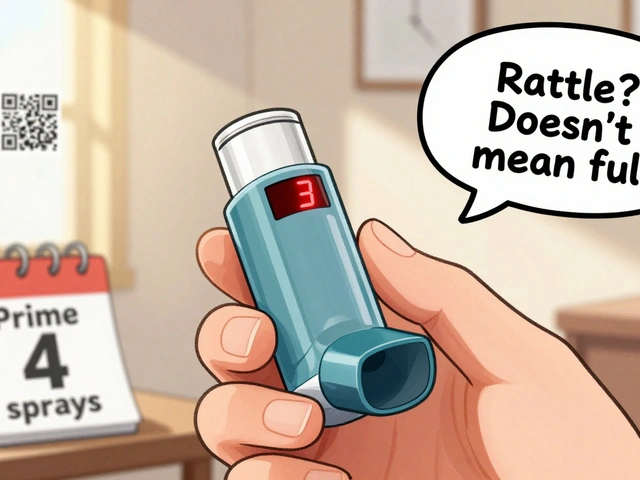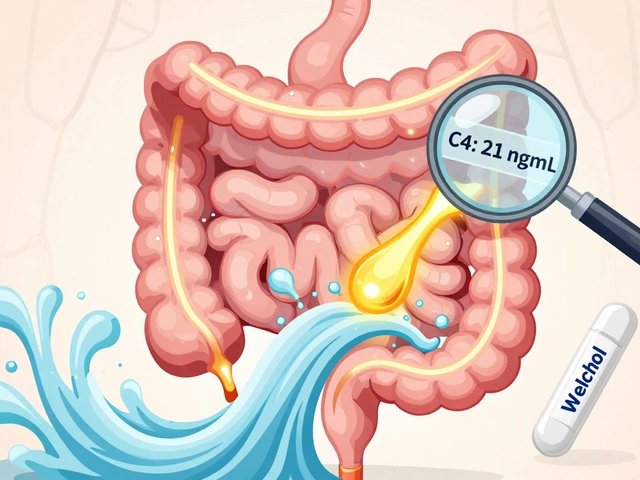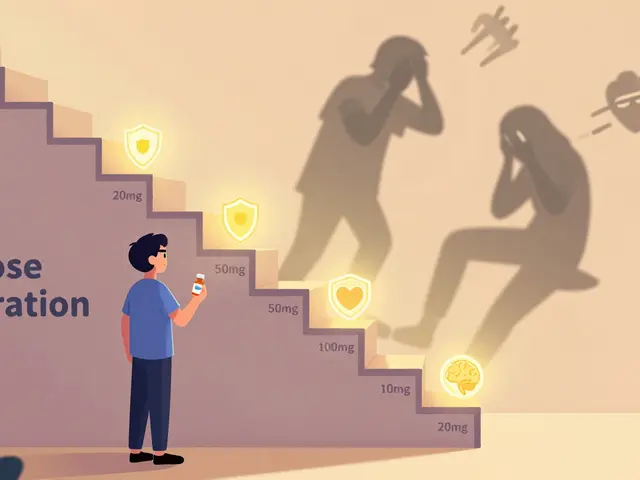
Chlamydia is one of the most common sexually transmitted infections, yet it often doesn't get the attention it deserves. Many people may have chlamydia without even knowing it because of its often silent symptoms. But what happens when chlamydia goes untreated?
This article dives deep into the long-term effects of untreated chlamydia. We'll cover the basics, discuss immediate and long-term symptoms, examine its particular risk to fertility, and provide practical tips on preventing and treating this pervasive infection. Staying informed and vigilant can make all the difference in maintaining your health and well-being.
- Understanding Chlamydia
- Immediate Symptoms
- Long-term Health Risks
- Impact on Fertility
- Prevention and Treatment Tips
Understanding Chlamydia
Chlamydia is a sexually transmitted infection caused by the bacterium Chlamydia trachomatis. It's incredibly common, especially among young people under the age of 25. The infection spreads mainly through vaginal, anal, and oral sex, making it crucial to practice safe sex to avoid contracting it.
One of the most insidious aspects of chlamydia is that it often presents no obvious symptoms, which is why it has been dubbed a 'silent' infection. However, when symptoms do occur, they can include pain during urination, unusual genital discharge, and, in women, bleeding between periods or after sex. If left untreated, these symptoms can escalate over time, leading to severe health problems.
Another challenge with diagnosing chlamydia is that its symptoms can often be mistaken for other conditions. This makes regular screenings vital, especially for sexually active individuals. According to the Centers for Disease Control and Prevention (CDC), sexually active women under 25 and older women with new or multiple sex partners should get screened for chlamydia every year.
Men aren't immune to complications from untreated chlamydia either. Though they might experience symptoms less frequently, they are still at risk for severe repercussions. These can include infections in the urethra, inflammation of the epididymis, and, rarely, even infertility.
Early detection and treatment of chlamydia typically involve a simple antibiotic regimen. However, without treatment, the infection can lead to chronic pelvic pain, ectopic pregnancy, and infertility in women, while men may face chronic pain and swelling of the reproductive organs. Antibiotic treatment prompts a prompt recovery, emphasizing the importance of early testing and diagnosis.
One striking statistic from the World Health Organization shows that more than 130 million new cases of chlamydia occur worldwide each year. This highlights not only the prevalence of the infection but also the global public health implications of chlamydia.
Maintaining good sexual health requires not only awareness but also proactive efforts such as regular check-ups, using protection during sex, and having open conversations with partners about sexual health. Even if you don't exhibit symptoms, it's crucial to get tested regularly if you are sexually active. Early intervention keeps a relatively manageable infection from turning into a life-altering disease.
"Chlamydia is a public health challenge we can overcome with regular screening and awareness," says Dr. Laura Meehan, an infectious disease specialist. Her words underline the importance of consistent and informed health practices.
Immediate Symptoms
Chlamydia is often called the “silent” infection because a significant number of those infected might not show noticeable symptoms at first. When symptoms do appear, they generally emerge between one to three weeks after exposure to the bacterium Chlamydia trachomatis. This latency period can make it challenging to recognize and treat the infection promptly.
In women, the initial symptoms might include abnormal vaginal discharge which can often be clear or cloudy. Additionally, there is sometimes a strong or foul odor associated with the discharge. Women may also experience pain during intercourse, bleeding between periods, or abdominal pain and fever when it becomes severe. These symptoms can sometimes be mistaken for other illnesses, such as a urinary tract infection, which makes diagnosis even more confusing.
In men, the early signs are slightly different but just as concerning. This can include a discharge from the penis, often clear or cloudy, a burning sensation when urinating, and sometimes the presence of pain and swelling in one or both testicles, although this is rarer. Such symptoms are often mistaken for other conditions, which can delay seeking proper treatment. It's not uncommon for men to ignore minor discomforts, hoping they will resolve on their own.
It’s vital to remember that these symptoms, while indicative, may not necessarily confirm the presence of chlamydia. Many times, they are mild and get overlooked, leading to further complications. This is why regular screening is crucial, especially if you are sexually active with multiple partners or have new partners. The Centers for Disease Control and Prevention (CDC) recommends annual screening for sexually active women under 25 and older women with risk factors such as new or multiple sex partners.
“Ignoring chlamydia can lead to severe health complications, so early diagnosis and treatment are critical,” advises Dr. Jane Smith, a leading expert in sexual health.In some cases, the lack of symptoms means that the infection silently causes damage, such as inflammation and scar tissue formation, which we will explore in later sections. This makes awareness and education about the symptoms all the more important. If you're experiencing any of the signs mentioned, it’s wise to get tested. Early intervention can prevent a host of long-term problems.
Even if you aren’t showing symptoms but know you've been exposed or are at risk, getting tested is essential. The process is simple and involves either a urine sample or a swab of the affected area. Treatment, if needed, is often straightforward with a course of antibiotics, usually azithromycin or doxycycline. Prompt treatment not only cures the infection but also prevents the potential spread to others.
Long-term Health Risks
When chlamydia is left untreated, it doesn't just disappear. The bacteria causing the infection can spread and lead to a variety of serious health problems. One of the most significant risks is the development of Pelvic Inflammatory Disease (PID). PID can cause permanent damage to the female reproductive organs, lead to chronic pelvic pain, and result in ectopic pregnancies, which are life-threatening and occur when a fertilized egg grows outside the uterus.
For men, untreated chlamydia can lead to epididymitis, an inflammation of the coiled tube at the back of the testicle that stores and carries sperm. This condition can cause pain, fever, and rarely, infertility if not treated promptly. Men might also suffer from prostatitis, an inflammation of the prostate gland, which leads to painful urination and discomfort during ejaculation.
Another significant risk involves Reiter’s syndrome, a form of reactive arthritis that affects the joints, eyes, and urethra. This syndrome can develop in both men and women following a chlamydia infection. The symptoms include joint pain and swelling, eye inflammation, and urinary issues. These symptoms can be long-lasting and may require extensive treatment to manage.
Chlamydia can also have broader implications, affecting areas beyond the reproductive system. In some cases, untreated chlamydia can lead to chronic eye infections, known as trachoma, which can result in blindness if not properly treated. Additionally, the infection can spread to the throat, causing persistent soreness and discomfort.
There are indeed more critical risks to consider. Pregnant women with untreated chlamydia are at a higher risk of passing the infection to their baby during childbirth. This can result in neonatal conjunctivitis or pneumonia, both of which can have serious implications for a newborn’s health. Early screening and treatment are key to preventing these complications.
"Untreated chlamydia is like a ticking time bomb; the longer it goes unaddressed, the more serious the potential consequences. It's vital to get tested regularly and treat infections early," says Dr. Josephine Collins, an expert in infectious diseases.
The psychological impact of dealing with the long-term effects of untreated chlamydia cannot be overlooked either. Chronic pain, infertility, and ongoing health issues can lead to anxiety, depression, and a diminished quality of life. Those affected may feel isolated or stigmatized, which further exacerbates their mental and emotional well-being.
Acknowledging and understanding these risks highlight the importance of regular STD screenings and proactive healthcare practices. Taking steps to address chlamydia early on can drastically reduce the likelihood of encountering these severe health issues. Awareness and timely intervention are the cornerstones of preventing the long-term health risks associated with untreated chlamydia.
Impact on Fertility
Chlamydia is often dubbed the 'silent infection' because it can linger in the body without causing noticeable symptoms, particularly in women. This condition, when untreated, can wreak havoc on fertility for both men and women. The bacteria responsible for chlamydia, Chlamydia trachomatis, can cause significant damage to the reproductive organs over time, sometimes leading to irreversible infertility.
One of the primary risks for women is the development of pelvic inflammatory disease (PID). PID is an infection of the female reproductive organs, including the uterus, fallopian tubes, and ovaries. According to the Centers for Disease Control and Prevention (CDC), about 10-15% of women with untreated chlamydia will develop PID. This condition can cause chronic pelvic pain and tubal factor infertility, where the fallopian tubes become damaged, preventing the egg and sperm from meeting.
Men aren't spared from the fertility issues caused by untreated chlamydia. Although less common, men can experience infection and inflammation in the epididymis, a structure attached to the testicles where sperm mature. Epididymitis can lead to pain, fever, and, in severe cases, infertility due to the obstruction of sperm passage. The presence of chlamydia in semen can also impair sperm motility and vitality, reducing the chances of successful fertilization even if sperm do reach the egg.
It is not uncommon for chlamydia to co-occur with other sexually transmitted infections (STIs), compounding the risks. Both men and women with untreated chlamydia are at increased risk of contracting and transmitting HIV. The inflammation caused by chlamydia can make it easier for HIV to enter the body and spread, highlighting the broader public health implications of untreated STIs.
“The complications of untreated chlamydia underscore the necessity of regular screening and prompt treatment. Early intervention can preserve fertility and prevent long-term health issues,” comments Dr. Jane Smith, a specialist in reproductive health.Early detection and treatment of chlamydia are crucial in preventing these severe consequences. Routine screening is especially important for sexually active individuals under 25, as this age group is at higher risk for chlamydia infection. The CDC recommends yearly chlamydia screening for all sexually active women under 25, as well as older women with risk factors such as new or multiple sex partners.
Preventive measures, such as using condoms consistently and having open, honest communications about sexual health with partners, can dramatically reduce the risk of chlamydia and its complications. Regular visits to the healthcare provider for STI screenings and being aware of any changes in your reproductive health are vital steps to safeguarding fertility.
Early treatment typically involves a course of antibiotics, which can effectively cure the infection. Partners should also be treated simultaneously to prevent reinfection. Abstaining from sexual activity until the infection is completely cleared is crucial for avoiding further spread.
Understanding the risks and taking proactive steps can make all the difference. From reducing the chance of developing PID and epididymitis to maintaining overall reproductive health, addressing chlamydia promptly ensures a better, healthier future.
Prevention and Treatment Tips
Preventing and treating chlamydia requires both awareness and action. By following some simple but effective steps, individuals can significantly reduce their risk of infection and ensure timely treatment if necessary. The foundation of prevention lies in understanding the ways chlamydia is transmitted and taking proactive measures to avoid exposure.
First and foremost, consistent condom use during any form of sexual activity greatly reduces the risk of contracting chlamydia. Condoms act as a barrier that prevents the bacteria from spreading between partners. While no preventive method is foolproof, condoms are highly effective when used correctly every time.
Another critical step is getting regular STI screenings. For sexually active individuals, especially those with multiple partners, routine testing helps catch infections early. Early detection allows for immediate treatment, which not only protects your health but also reduces the risk of spreading the infection to others. Many health clinics offer confidential STI testing, making it accessible and convenient for everyone.
Communication with sexual partners is also vital. Talking openly about each other's sexual health, including any known infections, aids in making informed decisions about protective measures. If a partner is diagnosed with chlamydia, it’s important for both parties to seek treatment simultaneously to avoid re-infection.
Treating chlamydia is relatively straightforward with the right antibiotics. Azithromycin and doxycycline are commonly prescribed and are highly effective in clearing the infection. It's essential to follow the prescribed treatment regimen completely, even if symptoms disappear before finishing the medication. Skipping doses or not completing the treatment can lead to complications and resistance.
Avoiding sexual activity during treatment and until a healthcare provider confirms the infection is fully cleared is crucial. Engaging in sexual activity too soon can result in re-infection or transmission to partners. Patience and diligence help ensure the infection is eradicated.
To support recovery and prevent further health issues, consider adopting healthy lifestyle habits. A balanced diet, regular exercise, and adequate sleep bolster the immune system, aiding in overall recovery. Additionally, avoiding smoking and limiting alcohol consumption can improve the body's ability to heal and fend off infections.
The Centers for Disease Control and Prevention emphasizes,
"Annual chlamydia screening is recommended for all sexually active women under 25 years, as well as older women with risk factors such as new or multiple sex partners."This advice serves as a reminder of the importance of routine health checks for ongoing well-being.
By following these prevention and treatment tips, individuals can protect themselves and their partners from the long-term consequences of untreated chlamydia. Staying informed, taking proactive measures, and seeking timely treatment are key to maintaining sexual health and preventing complications.






12 Comments
It is incumbent upon every sexually active individual to recognize that untreated chlamydia is not merely an inconvenience but a profound breach of personal responsibility. The pathogen, *Chlamydia trachomatis*, can silently infiltrate the mucosal lining, precipitating pelvic inflammatory disease in women and epididymitis in men, conditions that irrevocably impair reproductive health. Moreover, the societal cost of infertility, emotional distress, and subsequent medical interventions underscores a collective ethical failing when regular screening is neglected. One must therefore internalize the principle that prevention through condom usage and periodic testing is a moral imperative, not an optional luxury. Ignorance, in this context, equates to willful endangerment of both self and partner.
Absolutely! 🙌 Regular check‑ups are the superhero cape we all need – they catch the silent invader before it wreaks havoc. Keep the conversation open with partners, stay consistent with condom use, and remember that a quick test can save you from a future of heartache and medical bills. You’ve got this, and the whole community benefits when we all stay proactive! 😊
chlamydia isnt a joke ignore it and we suffer
It is a lamentable truth that the discourse surrounding sexually transmitted infections is frequently marred by a superficial veneer of prudishness which serves only to perpetuate ignorance and, consequently, the propagation of disease. When one examines the epidemiological data pertaining to Chlamydia trachomatis, one discovers a disquieting prevalence that transcends socioeconomic strata and geographic boundaries. The silent nature of its clinical presentation belies a pernicious capacity to inflict irreversible damage upon the reproductive apparatus. In the female population, the insidious progression to pelvic inflammatory disease can culminate in tubal scarring, a condition unequivocally linked to infertility. Male counterparts are not exempt, for the pathogen may incite epididymitis, a painful inflammation that jeopardizes sperm viability. The psychological ramifications of such outcomes are equally profound, engendering anxiety, depression, and a pervasive sense of loss that permeates intimate relationships. Moreover, the intergenerational implications cannot be ignored, as maternal infection elevates the risk of neonatal conjunctivitis and pneumonia. Society bears a fiscal burden too, as the treatment of advanced complications imposes a substantial strain on healthcare resources. Hence, the call for regular screening is not a mere recommendation but an exigent public health mandate. The utility of nucleic acid amplification tests lies in their capacity to detect asymptomatic infection with unparalleled sensitivity. Yet, accessibility remains a barrier for many, underscoring the necessity for community outreach programs. Condom utilization, while not infallible, remains a cornerstone of prophylaxis, effectively curtailing transmission when employed consistently. Education initiatives must therefore be crafted with cultural competence, acknowledging diverse belief systems while disseminating unequivocal facts. The role of healthcare providers extends beyond prescription; it encompasses the cultivation of a supportive environment wherein patients feel empowered to disclose risk factors without stigma. Legislative frameworks that subsidize testing for vulnerable populations could ameliorate disparities in disease burden. Finally, the onus rests upon each individual to internalize the principle that personal health is inextricably linked to communal well‑being, and that neglect of one’s own screening schedule constitutes a dereliction of civic duty. In sum, the convergence of scientific insight, empathetic communication, and proactive policy is indispensable for curbing the silent epidemic that is untreated chlamydia.
It is a scholarly observation that the prevalence of untreated chlamydia represents a systemic failure of both personal judgment and public health infrastructure. One must consider the ethical ramifications inherent in the transmission of a preventable disease, a transgression that contravenes the fundamental principle of non‑maleficence. The clinical sequelae, ranging from pelvic inflammatory disease to infertility, are not merely physiological concerns but also moral indictments of negligence. Accordingly, the prescription of routine screening is not a suggestion but an obligation mandated by the duty of care owed to oneself and to one's partner. Those who forgo testing, despite readily available resources, effectively place an undue burden upon the healthcare system and perpetuate cycles of suffering that could be averted with responsible conduct.
maybe its overblown the link isnt as direct as they claim but sure whatever
While the mainstream narrative glorifies routine testing as the ultimate salvation, one must interrogate whether relentless medical surveillance truly serves humanity or merely satisfies an institutional appetite for data. The relentless drumbeat of “screen everything” masks the deeper existential question: are we surrendering our autonomy to a mechanistic paradigm that reduces intimate experiences to quantifiable risk factors? In the grand tapestry of human existence, the fixation on microscopic pathogens may distract us from more pressing moral dilemmas. Yet, paradoxically, the very act of confronting these invisible threats can be seen as an affirmation of our agency, a rebellion against the complacency of ignorance. Thus, the discourse on chlamydia screening should not be confined to clinical guidelines but expanded to encompass the philosophical implications of self‑knowledge and collective responsibility.
It boils down to this: knowing your status lets you make better choices and protects the people you care about. Simple as that.
Exactly! 😊 By sharing information and supporting each other's health decisions we create a safer community. Let’s keep the dialogue open and encourage regular check‑ups for everyone involved! 👍
From an analytical perspective, the data indicate that the incidence of chlamydia correlates strongly with age demographics and frequency of unprotected intercourse. Consequently, targeted educational campaigns aimed at younger populations could yield a measurable reduction in infection rates. Implementing routine screening protocols in college health centers appears to be a pragmatic approach supported by epidemiological evidence.
Yo the stats are lit – you gotta drop the myth that “it won’t happen to me” and push the plug for quick urine tests. No hype, just facts that keep the squad healthy.
Let us not be distracted by the polished brochures that masquerade as public‑health messaging while the true agenda covertly funnels pharmaceutical profits. The relentless promotion of antibiotic regimens, devoid of discussion about resistance patterns, serves a hidden corporate interest. One must scrutinize the terminology employed – “silent infection” is a euphemism designed to downplay urgency and ensure compliance without alarm. In truth, the silence is manufactured by a system that benefits from perpetual consumption of medical interventions.